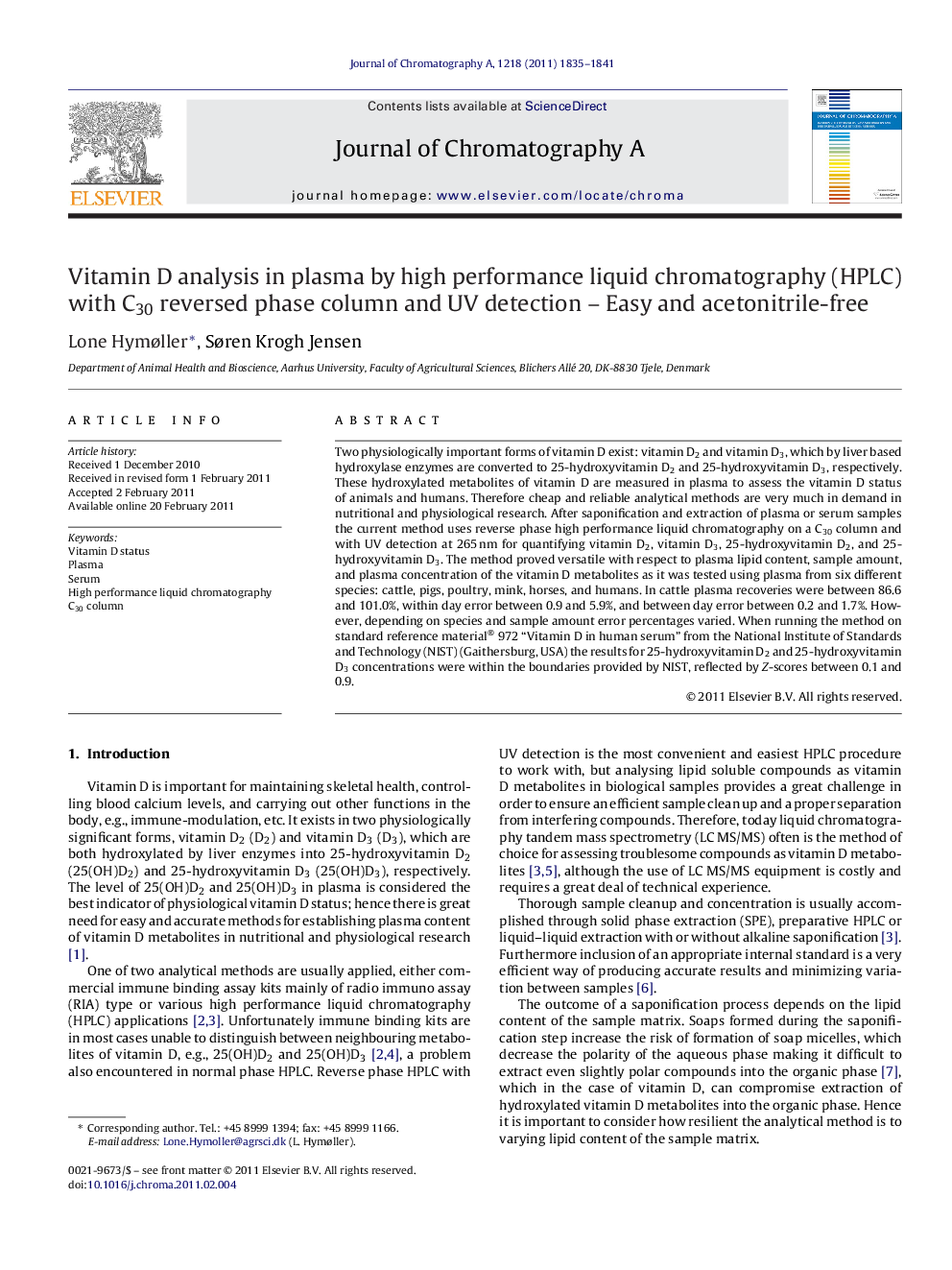| Article ID | Journal | Published Year | Pages | File Type |
|---|---|---|---|---|
| 1203762 | Journal of Chromatography A | 2011 | 7 Pages |
Two physiologically important forms of vitamin D exist: vitamin D2 and vitamin D3, which by liver based hydroxylase enzymes are converted to 25-hydroxyvitamin D2 and 25-hydroxyvitamin D3, respectively. These hydroxylated metabolites of vitamin D are measured in plasma to assess the vitamin D status of animals and humans. Therefore cheap and reliable analytical methods are very much in demand in nutritional and physiological research. After saponification and extraction of plasma or serum samples the current method uses reverse phase high performance liquid chromatography on a C30 column and with UV detection at 265 nm for quantifying vitamin D2, vitamin D3, 25-hydroxyvitamin D2, and 25-hydroxyvitamin D3. The method proved versatile with respect to plasma lipid content, sample amount, and plasma concentration of the vitamin D metabolites as it was tested using plasma from six different species: cattle, pigs, poultry, mink, horses, and humans. In cattle plasma recoveries were between 86.6 and 101.0%, within day error between 0.9 and 5.9%, and between day error between 0.2 and 1.7%. However, depending on species and sample amount error percentages varied. When running the method on standard reference material® 972 “Vitamin D in human serum” from the National Institute of Standards and Technology (NIST) (Gaithersburg, USA) the results for 25-hydroxyvitamin D2 and 25-hydroxyvitamin D3 concentrations were within the boundaries provided by NIST, reflected by Z-scores between 0.1 and 0.9.
